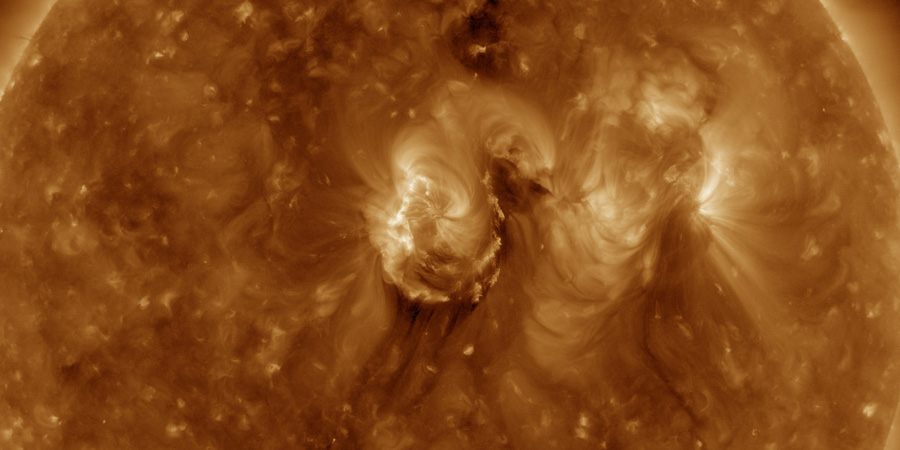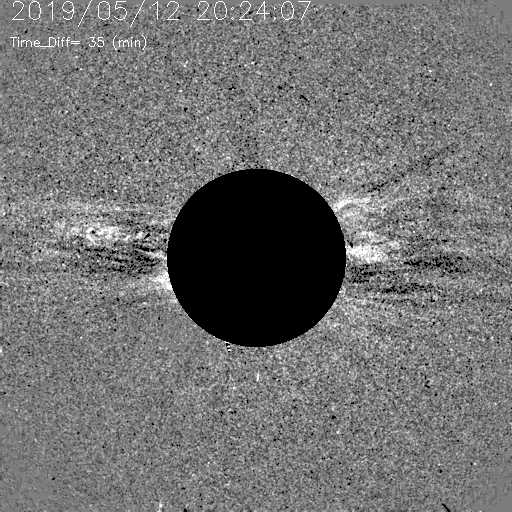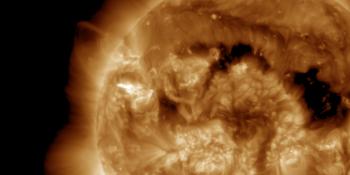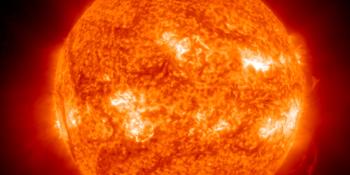Filament eruption, yet another CME
Monday, 13 May 2019 13:56 UTC

The sunspot regions that have been facing Earth the past few days are slowly disappearing but our Sun continues to launch coronal mass ejections into space. A filament eruption took place around 19 UTC yesterday evening near sunspot region 2741 and a coronal mass ejection managed to escape the Sun's gravity.
Watching the SOHO LASCO C2 and C3 coronagraph imagery from Earth's point of view (see the animation below) we clearly see a partial halo coronal mass ejection leaving the Sun.

Animation: The partial halo coronal mass ejection as seen by the SOHO/LASCO C2 coronagraph instrument with a likely earth-directed component.
The plasma cloud looks to be heading mostly towards the south but considering the partial halo extending well over 180 degrees and the fact that this eruption took place near the center of the solar disk means it is likely we will receive at least a glancing blow from this plasma cloud. With the help of the STEREO Ahead COR2 coronagraph we can calculate the speed of this plasma cloud which we estimate to be around 500km/s. Not the fastest coronal mass ejection ever of course but at least it is slightly faster than the coronal mass ejection observed two days ago.
Space weather could indeed become a little stormy in the coming days as there are now two plasma clouds somewhere between the Sun and Earth, both of them have a good chance of arriving at our planet. Yesterday's plasma cloud is unlikely to overtake the coronal mass ejection that was launched on Saturday so we might be able to see two distinct impacts at Earth later this week. Saturday's coronal mass ejection could arrive on 15 May which would be Wednesday (as mentioned in yesterday's news article) and this coronal mass ejection is likely to arrive on 16 May which would be this Thursday. Minor G1 geomagnetic storm conditions (Kp5) do seem likely at some point if these plasma clouds carry a favorable magnetic field with them so high latitude sky watchers with dark skies should be alert starting 15 May.
Thank you for reading this article! Did you have any trouble with the technical terms used in this article? Our help section is the place to be where you can find in-depth articles, a FAQ and a list with common abbreviations. Still puzzled? Just post on our forum where we will help you the best we can!
Latest news
Latest forum messages
Support SpaceWeatherLive.com!
A lot of people come to SpaceWeatherLive to follow the Sun's activity or if there is aurora to be seen, but with more traffic comes higher server costs. Consider a donation if you enjoy SpaceWeatherLive so we can keep the website online!

Space weather facts
| Last X-flare | 2025/01/04 | X1.85 |
| Last M-flare | 2025/01/09 | M1.1 |
| Last geomagnetic storm | 2025/01/04 | Kp5 (G1) |
| Spotless days | |
|---|---|
| Last spotless day | 2022/06/08 |
| Monthly mean Sunspot Number | |
|---|---|
| December 2024 | 154.5 +2 |
| January 2025 | 140.8 -13.8 |
| Last 30 days | 151.7 +34.3 |


